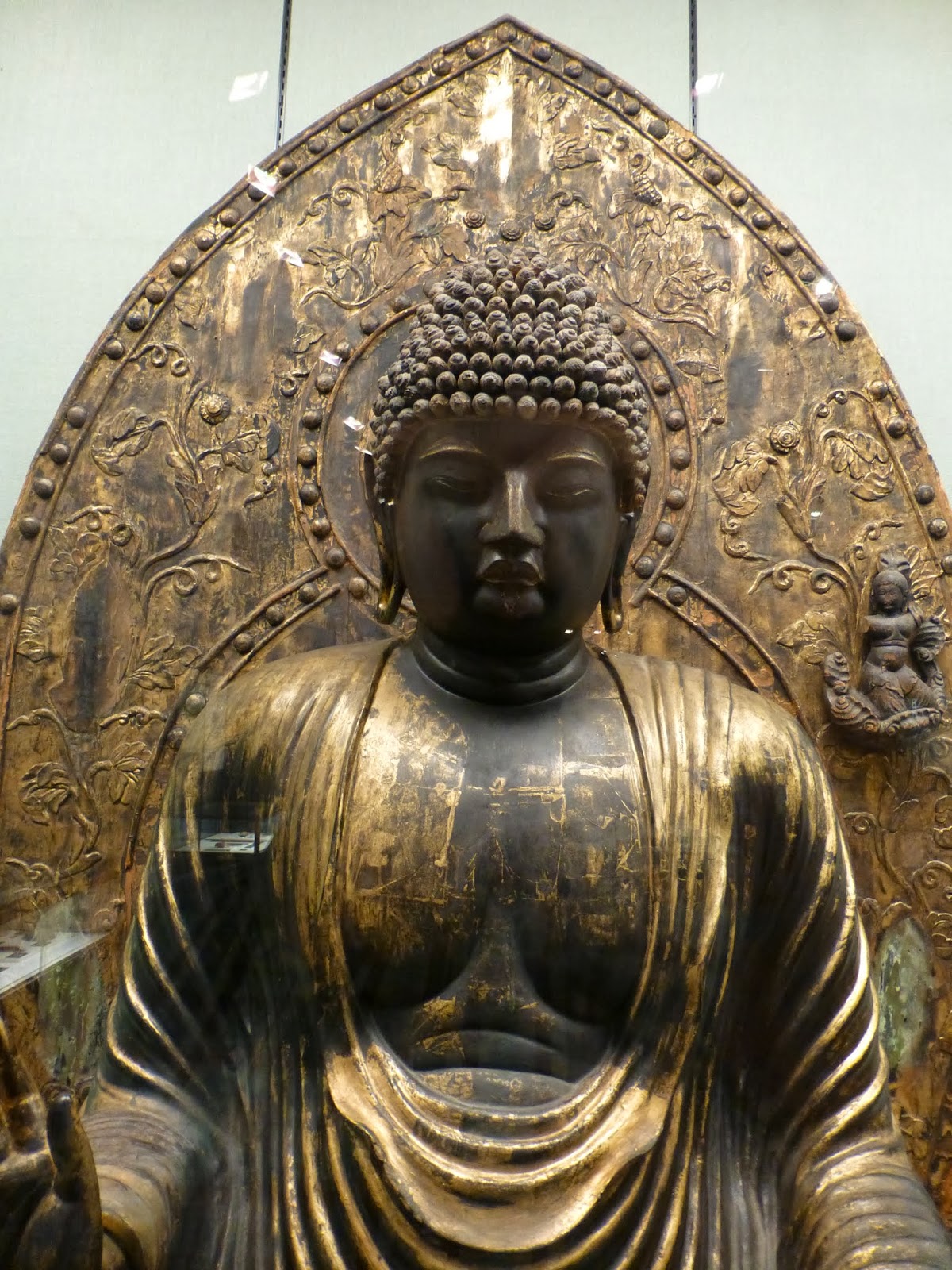Located across the street from the park that houses the Tsuraga-jo Castle, the Fukushima Prefectural Museum was a pleasant surprise. After paying my small admission fee, I began my history lesson.
The museum allows photography without flash, and I'm glad for that! I came across a bunch of fantastic exhibits that I want to be able to review/remember. And this really cool entrance way. I was thinking it might actually do something when I was inside, but... no. Still cool, though!
The museum is set up chronologically, as most history museums are. The centerpiece of the first "room" is a replica of the area's housing.
Hard at work in the fields.
Speaking of hard, this relic is made of stone.
I'm not sure about the art. Unfortunately, English-language signage is lacking - almost nonexistent. If I had been thinking, I would have taken pictures of the signs and had some help translating.
I like these little clay figures. I want one! I could probably make one of my own, actually.
More decorative art. This one has interesting ears.
Pottery. You can see all the Japanese signage here.
More pottery. In the middle are some more decorative pieces.
The multi-legged container. I'm not really sure what it was used for, but unless it's something really sacred I wouldn't mind having a small one myself.
And a close-up of the decorative objects. This pottery is from the Jomon period.
Religious artifacts are on display too. I don't pretend to know anything about Japanese religion other than it's a mix of Buddhism, Shintoism, and some Christianity.
I have never seen a piece like this.
Continuing to the next era, there is a diorama of a battle.
Archers, ready!
Attack! Just watch out for those arrows that can obviously reach at least this far.
There were a few dioramas in the museum. This battle scene might be the coolest.
It's not all pottery and archery. Here is a collection of farming and household equipment.
There's a float or stage on display in the middle of the room.
It displays a scene being acted out from a play.
Wall of signs. Signs are cool! Japan didn't really use modern-style signs until after World War II, and even today the traditional style of signage is frequently seen at traditional businesses (though instead of being made of wood they are plastic or metal.
Another display is set up to show a historical-era city street. It could be from the Edo period.
This streetscape allows visitors to peer in the back side of the buildings to see what rooms looked like.
Masks for theatre productions.
Here's an old bus. What makes this so special?
It runs on natural gas. The museum includes a lot of Showa-era materials.
Some of the exhibits in the "somewhat-modern era" section include some late-19th century threads. I like the label art used on the bundles.
Speaking of art, there are some war materials. Including this, which I think is some kind of propaganda.
Some more tools used in the area for industry. There are drill bits, lanterns, and flags.
I believe the museum might have given me a pamphlet when I arrived with English translations. Unfortunately, I can't find any of my Tohoku papers to see if I was able to keep it. I remember reading about the bus above and a few of the other more important items on display.
The nearest stop on the tourist loop bus is Tsuragajo Sannomaru, just outside the museum. The museum is open 9:30-17:00, closed on Mondays, days following national holidays, and at the end of the year. Admission to the permanent collection is 260 yen. They had a dinosaur special exhibition when I went but I didn't check it out.































Those clay figures are really cool. Sort of remind me of the Kodama from Princess Mononoke.
ReplyDeleteI think I found a local museum where I can learn how to make one. I don't remember much from Princess Mononoke, though I've seen several of them in museums across Japan so they're probably based on the same concept.
ReplyDelete